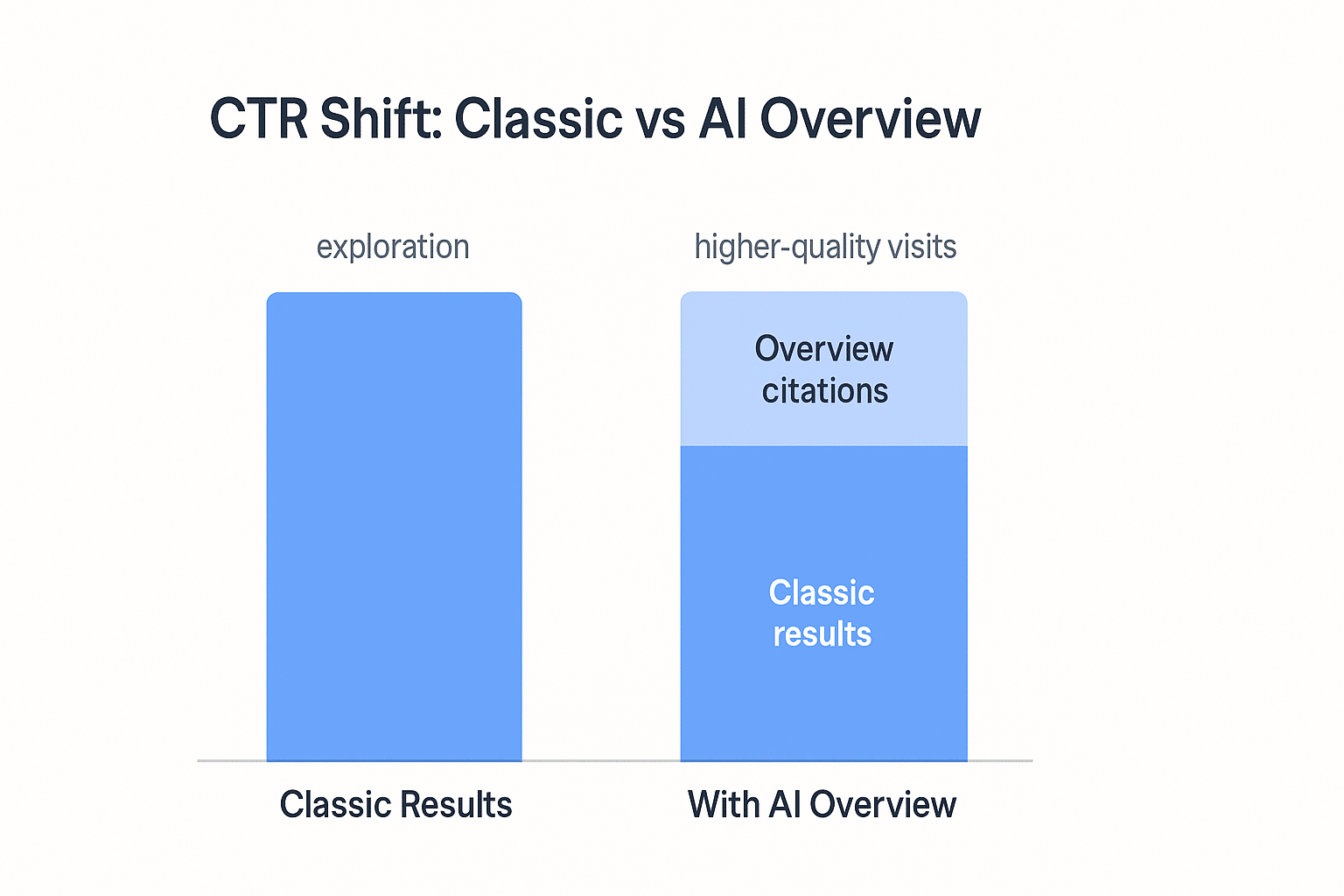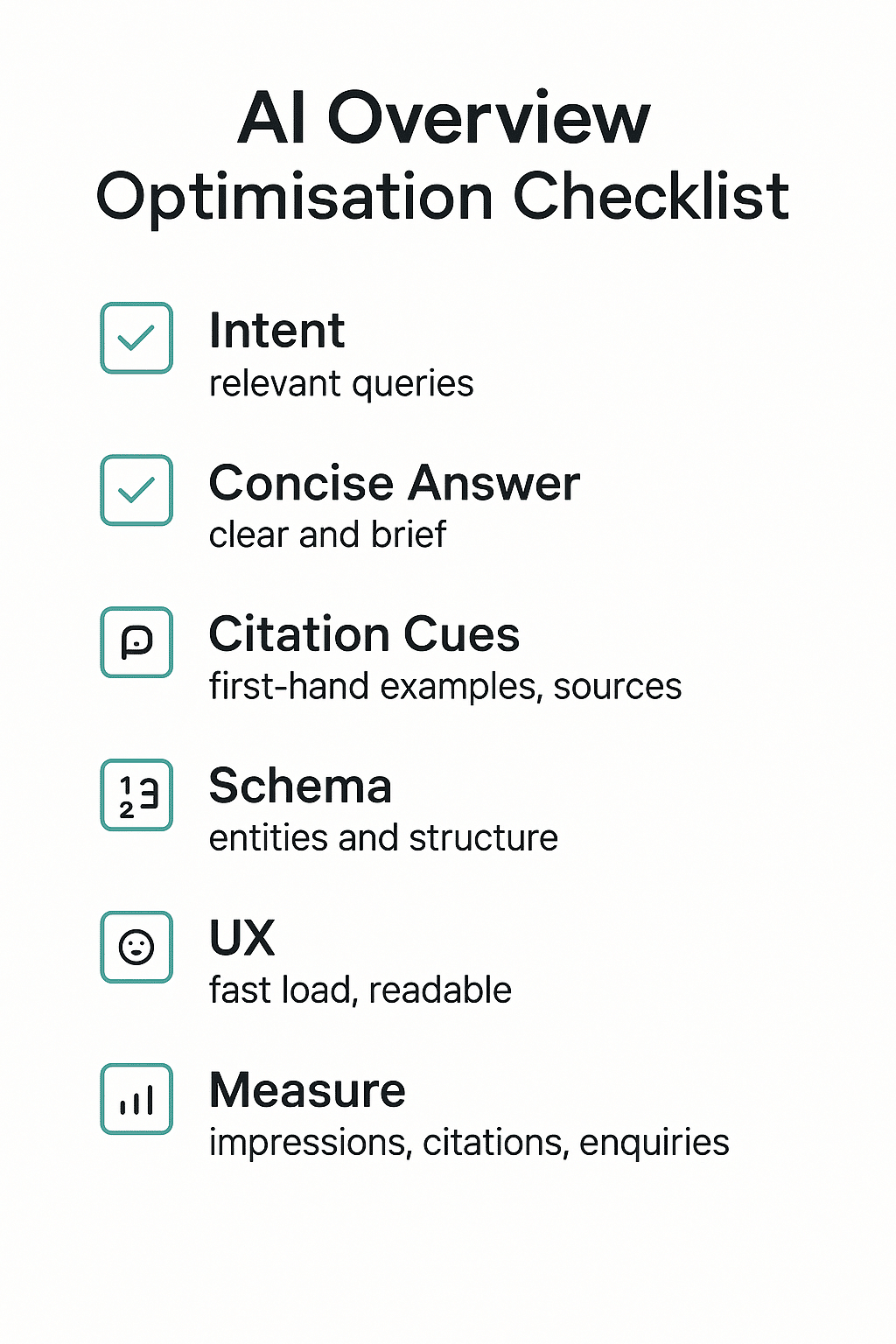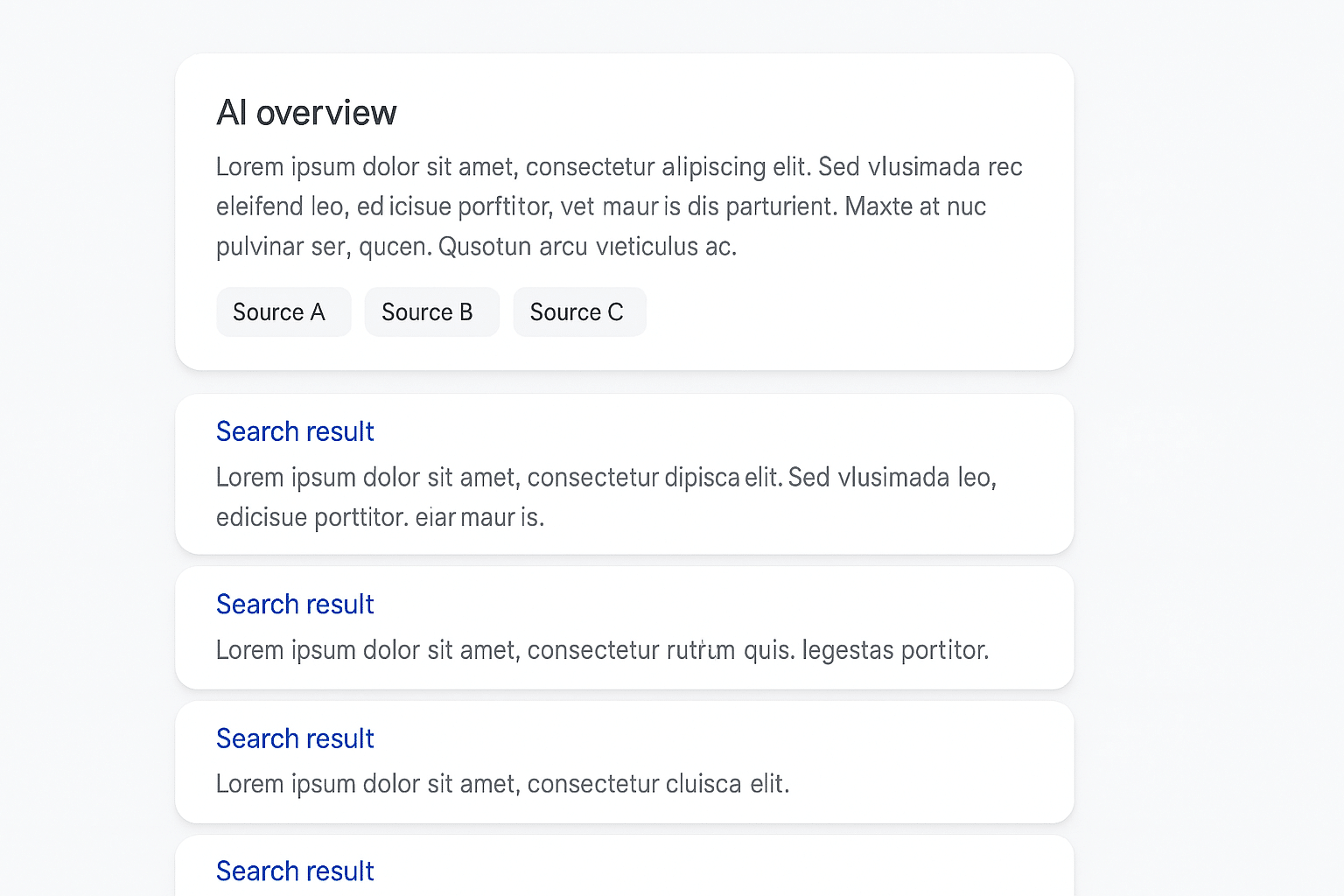Introduction
Ready to turn generative search into revenue? Google’s AI Overviews are rolling out across billions of queries. In Australia more than half of adults now use AI and want stronger safeguards, according to the Digital Lives of Australians 2025 report. This post demystifies AI Overviews and shows how to optimise your content for a measurable return.
What Are Google AI Overviews?
AI Overviews are Google’s generative search summaries. They appear above traditional results and combine a concise answer with a few cited links. Google uses a custom Gemini model and a “query fan‑out” technique to issue related searches and compile the overview, according to Google’s AI features guidance. Summaries only trigger when they add value, and your page just needs to be indexable; no special markup is required. Google says these links act like referrals and can drive higher‑quality visitors because people stay longer on cited pages, as described in Google’s AI Overviews update.
How AI Summaries Change User Clicks
Generative summaries change behaviour. A Pew Research Center study of almost 70 000 searches found that only 18 percent of queries triggered an AI summary. When one appeared, users clicked a traditional result just 8 percent of the time compared with 15 percent when no summary was present. Clicks on links inside the summary occurred in only 1 percent of visits, and sessions ended more often. Google counters that these experiences encourage people to explore a broader range of sources and deliver higher‑quality traffic, as noted in Google’s AI Overviews update. The takeaway: don’t chase raw click‑through rate; track engaged time and enquiries.

Content Strategies for AI Driven SERPs
To earn citations in AI Overviews, focus on clarity and credibility:
- Concise answers: Use question‑led headings and open each page with a crisp two‑sentence answer — your elevator pitch — then expand with details, examples and related questions.
- Evidence and citations: Share first‑hand research, case studies or client quotes. Link to trustworthy references such as Google’s AI features guidance or Australian Signals Directorate guidance. Government sites and well‑known authorities are frequently cited.
- Intent clusters and entities: Cluster pages by intent and mirror natural questions. Clarify entities — products, brands, locations and people — so the model understands context. Connect related pages with descriptive internal links and use schema markup to reinforce structure.
- Human tone and measurement: Consolidate content and write like a human. Agent 6’s search trends insights warned about AI‑generated oversaturation. Measure impressions, clicks, engaged time and conversions in Search Console. Follow AI ethics and cyber security guidelines to build trust.

Balancing Keyword Optimisation with AI Friendly Answers
Classic keyword optimisation still matters, but AI Overviews prioritise helpfulness. Cluster target terms by intent and weave them naturally into headings and summaries. Provide a short answer up front then build depth with explanations, examples and FAQs. Avoid thin repetition; originality and human voice trump exact‑match density. Use schema markup to clarify entities and relationships. When in doubt, ask whether your answer satisfies a real person — if yes, it will likely satisfy the generative model too.
Mini Case Snapshot
A regional accounting firm was invisible for queries like “simplify fringe benefits tax for startups.” Their blog buried the answer. We rewrote the page with a question in the H1, added a concise summary, included a bulleted list of common deductions and a brief case study and linked to their service pages. Within six weeks the page appeared as a cited source in AI Overviews. Impressions rose 28 percent and click‑through rate increased from 3.2 percent to 5.9 percent; qualified enquiry forms doubled. If you want similar results, talk to our SEO agency Sydney for a custom strategy.
Conclusion / Next Steps
AI Overviews aren’t going away. They reduce generic clicks but reward clarity and credibility. By structuring your content for generative search you can become the cited source and attract high‑value visitors. Focus on intent clusters, concise answers, authoritative citations, clear entities and continuous measurement. Measure success by engaged time, leads and enquiries instead of raw click‑through rate.
Have questions? Contact our team and we’ll show you how to use generative search to grow revenue.

